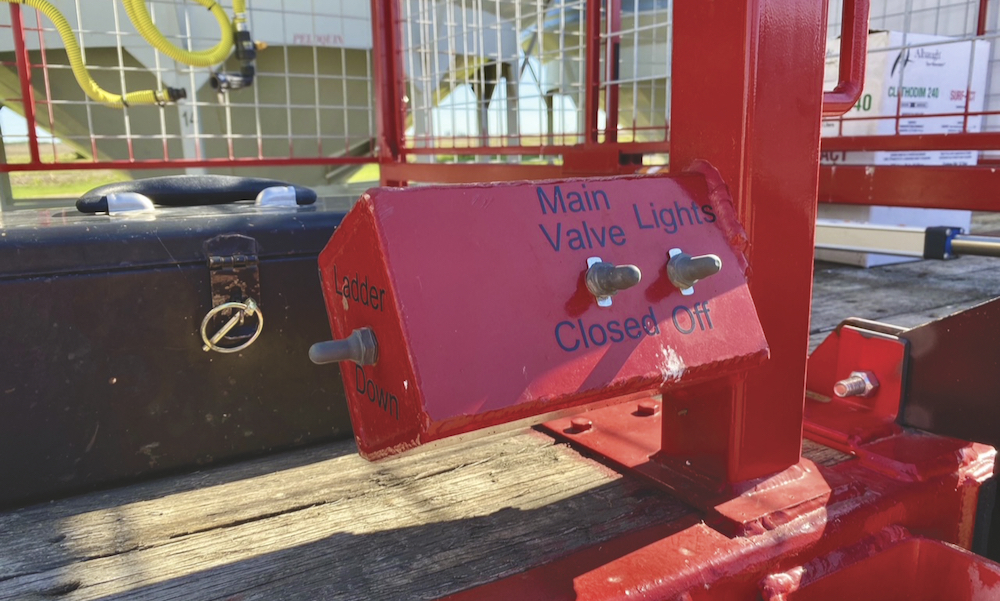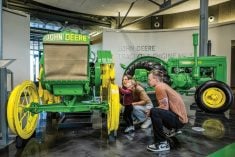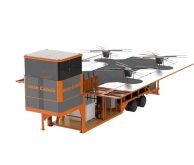Not everyone has the skills, time or facilities to take on a large equipment fabrication project, but for those that do, it may be possible to build a piece of equipment that exactly meets specific on-farm needs — and do it at a lower cost than buying off the shelf. For Kyle Csversko of Neepawa, Man., taking on winter fabrication projects is nothing new. Two years ago, he decided to tackle creating a more efficient sprayer tender trailer.
“I’m a licenced mechanic, I have a 6,000-square-foot workshop and I do a lot of work on my own,” he told Grainews. “I do projects like this every winter. I thought, you know what, I’m just going to do this myself. It took me around a month and a half from start to finish.”
The result of that effort is a one-off sprayer tender that does exactly what Kyle needs it to do on his farm. He used the back half of a flat deck super B set the farm had purchased 12 years ago. Both trailers in the super B combination were previously used to carry three, 1,200-gallon tanks and a two-inch transfer system to keep a sprayer supplied in the field.

“After I had that for a while, I upgraded the sprayer and everything (on it) was three-inch,” he adds. “And I thought I need to speed up our fill times.”
The new, shorter trailer was outfitted with two, 2,300-gallon tanks along with a shop-built chemical cage and an all-new, three-inch piping system for faster fills. As part of the upgrade project, the trailer was repainted and given a full maintenance overhaul, as well as a new, four-foot extension at the rear to slightly lengthen it.
“At the back, I put a three-inch power reel,” he says. “We have 70 feet of reel that goes in and out. Also, on the back side of it, I put a custom-built, 100-gallon fuel tank, so when I go to my further-away stuff, I have fuel for the sprayer. I built my own chemical cage in the shop. We measured everything out and designed it, and I switched everything over to three-inch, a three-inch pump and chem handler.”

Kyle gave some thought to not only making the tender efficient but easy to use as well, integrating lighting and some electrically operated systems.
“I made stairs go up with a 12-volt cylinder,” he explains. “With a switch the ladder comes down. And I have two (other) switches — one for lights and one for an electrically controlled valve. So, when we’re filling, as soon as the sprayer is full we can hit the switch and shut the water off completely and shut the pump off.
“On the back, I put another switch on the reel. It’s a one-inch electric valve, so it will drain the hose and you can reel it in very easily.”

When it comes to plumbing, the decision was made to use plastic, but keep maintenance and easy repair in mind.
“It’s all plastic — the 80-grade black plastic,” he says. “I did the whole trailer in flanged connections except for a couple of threaded ones, so if you have to take something apart, you just undo the flanges and you can pull it apart quickly if you have to fix it.
“Also, I made it easy to winterize. I have a three-inch coupler with an air line to it and a couple of valves along the trailer. If I need to winterize it quickly, I can pump air through all the fittings and empty all the water out. You get some cool nights in the fall.”The end result is the new tender trailer has significantly reduced refill times in the field. And with a manifold system built into the trailer piping, filling it takes only about 16 to 18 minutes, and flow can be directed to each tank independently.
Read Also

Claas brings 1000 Series SP forage harvesters to Canada
In mid-August, Claas unveiled its new line of Jaguar forage harvesters at an event in Visalia, California, deep in the heart of that state’s dairy region.
“If I’m sucking out of totes, it would roughly be around that eight to 10 minutes we fill a 1,000-gallon sprayer,” says Kyle. “We usually get about four easy fills (from one tender load) when we’re going. In a long day of spraying, to speed up fill times I would say it got me two more tanks. That’s probably another 200 acres sprayed in one long day.”
Kyle says if he was designing the trailer now after having used it, the only change he would make is to possibly go up to the next-sized tank, which would give a few more fills from one load. But he hasn’t made any major changes to the tender.
“I did modify a couple of small things this spring to improve the design,” he says. “Small minor things.”

In all, he estimates the cost of the new materials used to build the tender amounted to between $16,000 and $18,000. That was the only cost aside from the initial purchase price of the trailer.
“We’re not scared to tackle things where we can try and save money,” says Kyle.
















